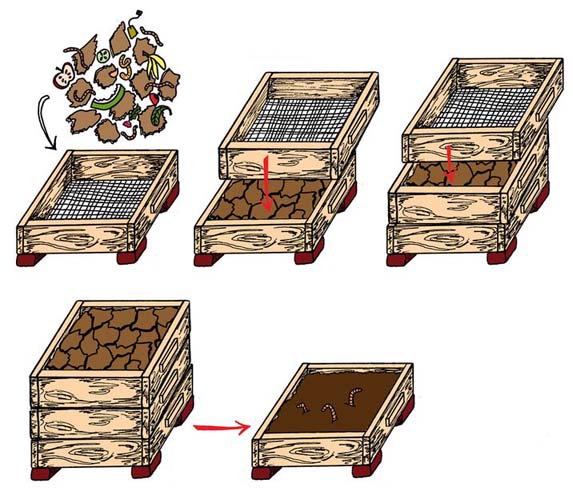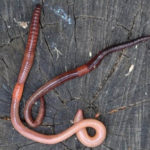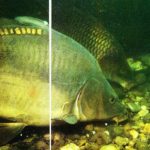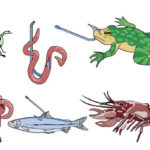 Najpewniejszą metodą zaopatrzenia się w rosówki jest własna hodowla. Ten, kto posiada odpowiednie warunki może bez większych inwestycji i trudów stać się ich hodowcą. Doradzać można wspólne przedsięwzięcia wielu zainteresowanych. O tym, że hodowla jest niezbyt kłopotliwa i łatwa niech nas przekonają następujące dane:
Najpewniejszą metodą zaopatrzenia się w rosówki jest własna hodowla. Ten, kto posiada odpowiednie warunki może bez większych inwestycji i trudów stać się ich hodowcą. Doradzać można wspólne przedsięwzięcia wielu zainteresowanych. O tym, że hodowla jest niezbyt kłopotliwa i łatwa niech nas przekonają następujące dane:
Rosówki (i w ogóle dżdżownice) należą do zwierząt dwupłciowych, co oznacza, że każdy osobnik ma za równo żeńskie, jak i męskie narządy płciowe. Znoszone jaja są zamknięte w kokonie. Wylęg następuje po 2-3tygodniach, w ilości nawet 20 sztuk, które dojrzewają w ciągu 2-3 miesięcy. Osiągnięcie dojrzałości płciowej można zaobserwować po wystąpieniu tzw. siodełka – szeregu łatwo zauważalnych grubszych pierścieni w przedniej części ciała. Pożądaną wielkość rosówki osiągają dopiero w 5-6 miesiącu.
Skrzynia do hodowli rosówek, najlepiej drewniana, może mieć dowolne wymiary. Jej głębokość za to musi być ograniczona (50-60 cm). Dziurkowane dno powinno być zabezpieczone stosunkowo gęstą i mocną siatką z tworzywa sztucznego. Skrzynię należy ustawić na podwyższeniu (np. z cegieł) tak, by istniała możliwość wentylacji od spodu. Jej stronę zewnętrzną można zakonserwować odpowiednim środkiem (dziegieć, smoła, farba), stronę wewnętrzną można nawoskować. Podściółka powinna się składać z: 1/3 zwykłej ziemi, 1/3 dobrze przefermentowanego końskiego nawozu i 1/3 suchych liści. Na dno skrzyni można ułożyć trochę skorup z glinianych doniczek, natomiast przy układaniu poszczególnych warstw podściółki należy je przesypywać płatkami owsianymi i fusami z kawy, która oprócz wartości odżywczych ma także i tę zaletę, że jest środkiem dezynfekującym. Ułożonych warstw nie ubijamy. Po zagłębieniu do podściółki rozrodowych rosówek (60-100 sztuk), skrzynię przykrywamy tkaniną workową i zraszamy ją co 2-3 tygodnie odstałą wodą z dodatkiem mleka. Skrzynię ustawiamy w ustronnym miejscu — tak, żeby w miarę możliwości utrzymywała się tam temperatura 18-22 °C, odpowiednia dla rozrodu i rozwoju rosówek. W okresie hodowli należy pilnować, by podściółka była odpowiednio wilgotna (jednak nie stale mokra) i aby rosówki miały pod dostatkiem odpowiedniego pokarmu. Z ich karmieniem nie ma kłopotów, bowiem rosówki odżywiają się nie tylko odpadkami kuchennymi, lecz także odpadkową mąką, kukurydzą, śrutą, jabłkami, fusami z kawy it. (nie jedzą słonego pieczywa). Jeżeli mamy możliwość inwestowania w taką hodowlę, możemy z powodzeniem jako karmę wykorzystywać dobrej jakości pokarm białkowy i oleisty zmieszany z pokarmem węglowodanowym. Raz na miesiąc należy skrzynię odwrócić do góry dnem, co pozwoli uniknąć nadmiernego ubicia podściółki.
Ważne jest przestrzeganie odpowiedniej wilgotności środowiska. Jest ona optymalna wtedy, gdy z garści podściółki można wycisnąć nieco wody. Najlepszym wskaźnikiem stopnia wilgotności są same rosówki: jeżeli przebywają na głębokości 15—18 cm to możemy być spokojni – wilgotność jest właściwa, jeżeli jednak skupiają się na dnie, środowisko jest zbyt suche i należy intensywniej zraszać, jeżeli z kolei tłoczą się na powierzchni – należy nawilżać oszczędniej.
Rozmnażanie następuje z reguły już po dwóch tygodniach i można się spodziewać przyrostu nawet 30 osobników na 100 cm² powierzchni.
Jeszcze prostsza i bardziej dostępna jest hodowla rosówek w dołach gruntowych. W ogrodzie wystarczy wykopać 60-70 centymetrowy dół, a nad powierzchnią gruntu wzmocnić jego ściany ceglanym (lub podobnym) murem na wysokość 10-15 cm po to, by ograniczyć ściekanie do dołu wody deszczowej. Dół należy przykryć prostym daszkiem. Zasada hodowli w dole jest taka sama jak w skrzyni.









Dzień dobry,
fajna strona i w dodatku estetycznie wygląda.
mam pytanie, ta hodowla w dole musi być od spodu wyściełana jakąś siatką, czy folią?
„dno powinno być zabezpieczone stosunkowo gęstą i mocną siatką z tworzywa sztucznego”
Czy zamiast skrzyni można użyć wiadra i powytapiać od spodu dziurki czy lepiej zainwestować?